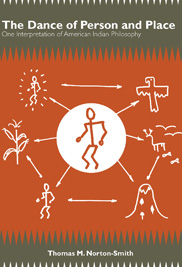Featured Article
Open Enrollment 2011 is Underway
The Open Enrollment period for eligible faculty and staff to select medical, insurance and other benefits-related options for 2011 started yesterday (Oct. 17) and will run through Monday, Nov. 8.
read moreKent State University at Stark's Norton-Smith Imbues Teaching With a Native View
Posted Oct. 18, 2010For Dr. Thomas Norton-Smith, philosophy is more than a 50-minute class. Whether he's pulling out crayons and paper, "blooping" out of existence, or asking a student, "How do you know that for sure?" Norton-Smith is on a mission to share his passion for philosophy.

Former students of Norton-Smith, associate professor of philosophy at Kent State University at Stark, describe his great charisma in the classroom. He challenges his students to think critically about the world around them, and the same holds true for his new book, The Dance of Person and Place: One Interpretation of American-Indian Philosophy, which offers a fresh perspective on American-Indian thought.
Norton-Smith, a mixed-blood Shawnee Indian, is the only American-Indian professor on the campus of Kent State Stark. It's no secret his passion lies in American Indian philosophy. When asked what his book brings to the table, he says, "It's a genuine attempt to try and get a handle on a native world view."
Norton-Smith encourages students to think critically about what influences an individual's world view. For example, he suggesting thinking about this: If there are no leaves on the trees and you can see someone's breath leaving their mouth, then you know it's cold outside, right? We all use these kinds of outside influences to shape what we know is true about the world around us. The Dance of Person and Place looks at these kinds of "everyday" phenomena through the eyes of an American Indian and the striking differences this world view has from our Western tradition.
If you're a "culture buff," you'll definitely want to add this book to your collection.
Norton-Smith advises approaching his book "with a generous spirit."
"Let's face it," Norton-Smith adds, "this book has something for everyone to hate. Western philosophers will be mad because I argue that (some views are) culturally biased and American Indians will be upset because I assume that the Western tradition is as legitimate as the Native tradition."
Without intending to give political critique, he hopes the book will be an eye-opener for both worlds.
Philosophy isn't the only discipline Norton-Smith has to his credit - he's also a self-described "math geek." While he received a Ph.D. in philosophy from the University of Illinois, he also received his dissertation in the philosophy of mathematics and a master's in mathematics. He relates much of his philosophy teaching to mathematics, which eases the burden of understanding math for many of his students.
When asked what made him choose philosophy over math, he gives this explanation: "One day I was sitting in my topology class, and the professor began talking about mathematical existence. I asked, ''What kind of existence is that?' And the professor replied, 'Well, you need to go talk to the philosophers across campus.'
"I guess you could say I overstayed my visit."
Norton-Smith has been teaching with Kent State University since 1985 and began his stay at Kent State Stark in 1988. He has contributed to the Kent State University Faculty Senate for 13 years and the Kent State Stark Faculty Council for eight years, chairing each for two years. He's also been the chairperson of the American Philosophical Association Committee on the Status of Indigenous Philosophers. When asked what he's up to now, he said it's time to relax and do what he loves most - teaching. This fall, he's instructing an American-Indian Philosophy course and will be offering the same in an honors course in the spring.
The Dance of Person and Placewas published in June of this year.
By Matt Lewis
(This article first appeared in the fall 2010 edition of Encompass)